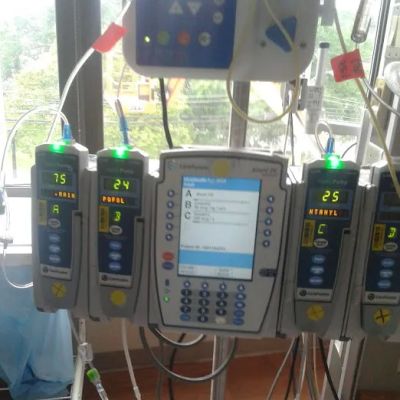How Cardiologists Help Manage Peripheral Artery Disease
- Understanding Peripheral Artery Disease (PAD)
- The Role of Cardiologists in Managing PAD
- How Cardiologists Diagnose PAD
- Treatment Options for Peripheral Artery Disease
- Success Stories: Managing PAD Effectively
- Conclusion: Partnering with Cardiologists for Better Heart Health
Understanding Peripheral Artery Disease (PAD)
Peripheral Artery Disease (PAD) is a serious circulatory condition in which narrowed arteries reduce blood flow to the limbs, often affecting the legs. As the arteries harden and become clogged with plaque, it becomes harder for blood to reach the lower extremities. PAD can lead to symptoms such as pain in the legs, cramping, numbness, and a greater risk of heart attack and stroke. It is estimated that around 8 to 12 million Americans have PAD, making it a common but underdiagnosed condition. It is essential to catch PAD early to prevent complications and improve quality of life. This is where cardiologists come in, providing crucial guidance and treatment.

The Role of Cardiologists in Managing PAD
Cardiologists play an essential role in diagnosing and managing Peripheral Artery Disease. As specialists in heart and vascular health, they are trained to identify the signs and symptoms of PAD early. Cardiologists not only provide medical treatment but also offer valuable lifestyle recommendations to prevent further complications.
One of the most significant contributions cardiologists make is early detection. PAD often begins without noticeable symptoms, and individuals may not realize they have it until more severe complications arise. Cardiologists use advanced diagnostic tools such as ultrasound, angiography, and blood tests to identify narrowed or blocked arteries and assess the severity of PAD.
Once diagnosed, cardiologists design personalized treatment plans, which may include medications to improve blood flow, reduce cholesterol, or manage blood pressure. They also help patients develop healthy habits to slow the progression of the disease, focusing on the importance of regular exercise, a balanced diet, and smoking cessation.
Optum Cardiology - Lake Success - Dakota Dr
1 dakota dr lake success ny
1 Dakota Dr Ste 310, New Hyde Park, NY 11042, USA

How Cardiologists Diagnose PAD
Diagnosing Peripheral Artery Disease involves a combination of patient history, physical examination, and specialized tests. Cardiologists begin by asking about symptoms, risk factors, and family medical history. They will also check for signs of PAD such as weak or absent pulses in the legs and feet, changes in skin color, and wounds that do not heal.
Once these preliminary steps are taken, cardiologists use diagnostic tests to confirm the diagnosis. One of the most common tests is the Ankle-Brachial Index (ABI), which compares the blood pressure in the ankle with that in the arm. A low ABI score suggests PAD. Other tests may include ultrasound to visualize blood flow, CT scans, or magnetic resonance angiography (MRA) to detect blockages in the arteries.
By using these advanced tests, cardiologists can evaluate the severity of PAD and determine whether the condition is isolated to one area or widespread throughout the body. Early diagnosis is crucial because it allows for earlier intervention and a better chance of preventing more serious complications, such as gangrene or limb amputation.
Treatment Options for Peripheral Artery Disease
Once PAD is diagnosed, cardiologists work with patients to choose the best treatment options based on the severity of the condition and the individual’s overall health. The primary goal is to improve blood flow and relieve symptoms, such as leg pain and cramping. Treatment options include lifestyle changes, medications, and in some cases, surgical procedures.
For many patients, lifestyle modifications are the first line of treatment. Cardiologists strongly recommend regular physical activity, which has been shown to improve circulation and help manage PAD symptoms. Patients are also encouraged to quit smoking, as smoking is one of the leading causes of PAD and worsens its progression. Additionally, adopting a healthy diet, managing stress, and maintaining a healthy weight are essential components of PAD management.
Medications also play a critical role in managing PAD. Cardiologists may prescribe medications to lower cholesterol, manage blood pressure, or help blood flow more freely. In some cases, blood thinners may be prescribed to reduce the risk of blood clots.
If lifestyle changes and medications are not enough, more invasive procedures may be necessary. These may include angioplasty, where a balloon is used to open up blocked arteries, or stenting, which involves placing a small mesh tube to keep the artery open. In more severe cases, surgery to bypass blocked arteries may be required. Cardiologists carefully evaluate the risks and benefits of these treatments and choose the most appropriate option based on the patient’s condition.
Success Stories: Managing PAD Effectively
Many patients with Peripheral Artery Disease have successfully managed their condition with the help of cardiologists. Take the case of Mary, a 62-year-old woman who struggled with pain while walking due to PAD. After visiting her cardiologist, she was diagnosed and prescribed a treatment plan that included walking exercises, dietary changes, and cholesterol-lowering medication. Over time, Mary noticed a significant improvement in her symptoms and was able to return to her normal activities. By following her cardiologist’s recommendations, she was able to prevent further complications and improve her quality of life.
Another success story is John, a 55-year-old man who had advanced PAD and was at risk of amputation due to severe blockages in his legs. His cardiologist recommended angioplasty, and the procedure successfully restored blood flow to his legs. John followed up with a healthy lifestyle plan, including regular exercise and dietary adjustments. Today, he is walking pain-free and continues to work with his cardiologist to manage his PAD.
These stories highlight the importance of timely diagnosis and personalized treatment plans for managing PAD. With the right care, many individuals with PAD can lead healthy, active lives without the need for invasive interventions.
Partnering with Cardiologists for Better Heart Health
Cardiologists play an integral role in helping individuals manage Peripheral Artery Disease effectively. Through early diagnosis, personalized treatment plans, and ongoing support, they enable patients to improve their quality of life and prevent the progression of PAD. Whether through lifestyle changes, medication, or surgical interventions, cardiologists are the key to managing PAD and reducing the risk of severe complications.
If you or a loved one are experiencing symptoms of PAD, it’s essential to seek help from a qualified cardiologist. Early intervention is critical in preventing further health issues and ensuring that you can live an active, healthy life. Don't wait—take charge of your heart health today and consult a cardiologist to get started on the path to managing PAD effectively.





















West Chester Cardiology
west chester cardiologists
531 Maple Ave, West Chester, PA 19380, USA